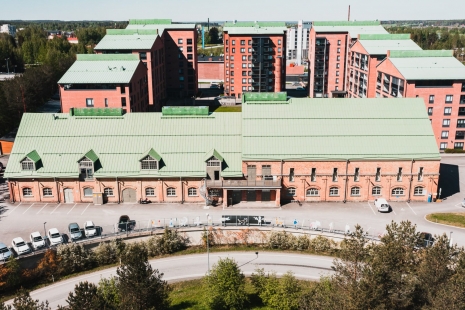The artists of the exhibition are Brandon Ballengée, Cecilia Jonsson, Julia Lohmann, Soichiro Mihara, Leena Saarinen and Antti Tenetz. The curators are Erich Berger, Mari Keski-Korsu and Anna Puhakka. The exhibition has previously been on display at the Annantalo Art Centre in Helsinki, and it has been created in collaboration with the Bioart Society.
Brandon Ballengée large-scale photographs highlight a deteriorating environment through mutated frogs, which he has collected during his field research. Cecilia Jonsson’s work makes the sea’s acidity levels visible with giant PH-indicators and explores the marine environment. In her work, Julia Lohmann focuses on seaweed as her primary material for creating art. She is interested in what this material can tell us about the state of the seas and what could be done to stop the ocean acidification. Soichiro Miharan’s work gives voice to the radioactive radiation that emerged in the artist’s country after the accident at the Fukushima nuclear power plant. Leena Saarinen aims to bring the language of people and birds closer together by creating an alphabet for bird song. Antti Tenetz’s work explores the possibilities created by artificial intelligence and biology in space exploration.
The research subjects of the artists lead to deeper questions than the aestheticization of the final work of art: What is coexistence like in different types of ecosystems? How do humans relate to their environment? How can we envision the changing world through these artworks? Through science, art, design and technology we are able to ponder these questions.
The Bioart Society develops, produces and arranges activities that consider art and natural sciences and usually focus on biology, ecology or biosciences. The Society has an art space called SO-LU, which serves as an artistic laboratory and a platform connecting art, science and society, in Katajanokka, Helsinki. The Bioart Society has a residency program for artists at the Kilpisjärvi Biological Research Station.





